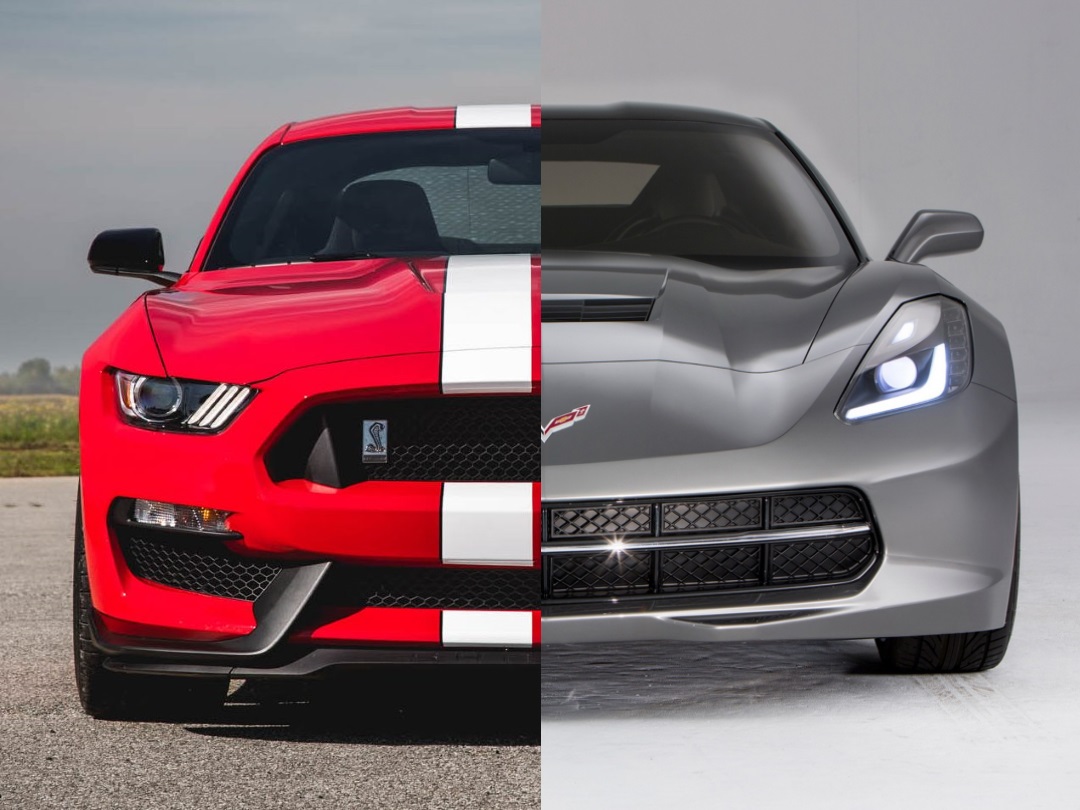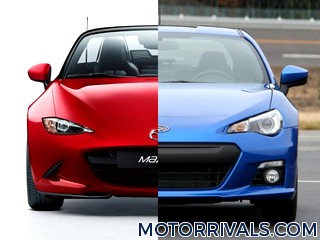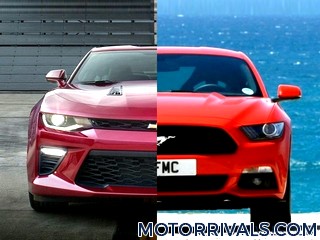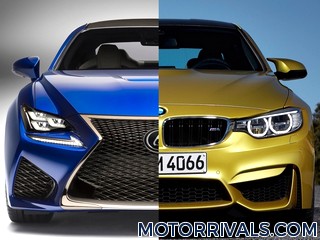2017 Mercedes-Benz SLC-Class vs 2017 Porsche 718 Boxster
Mercedes-Benz SLC-Class Press Release Highlights
The new Mercedes-Benz SLC has an impressive heritage to live up to: its
predecessor, the SLK, which was launched in 1996, won fans around the
world and achieved sales of around 670,000 units. Comprehensively
refined and with a model line-up ranging from the high-torque and
economical SLC 250 d to the sporty, high-performance Mercedes-AMG SLC
43, the new model has what it takes to build on that success. The SLC
250 d, SLC 300 and SLC 43 feature the sport/comfort-oriented 9G-TRONIC
automatic transmission as standard, while it is available as an option
for the new 115 kW (156 hp) SLC 180 (not available in the UK) and for
the SLC 200.
Driving Performance is the AMG brand promise -- and the Mercedes-AMG SLC 43 lives up to it in impressive style. The new model combines a 270 kW (367 hp), 520 Nm, 3.0-litre V6 biturbo engine with a modified version of the AMG sports suspension familiar from the Mercedes-AMG SLK 55, and the combination is reflected in the sporty performance figures, with the SLC 43 accelerating from 0 to 100 km/h in 4.7 seconds.
The SLC 180 and SLC 200 are fitted with a 6-speed manual transmission. The sport/comfort-oriented 9G-TRONIC automatic transmission is available for these models as an option and fitted as standard in the SLC 250 d, SLC 300 and SLC 43.
Drivers who choose the Dynamic Handling package (optional extra), which features a 10 mm lower chassis, an adaptive damping system, direct steering and ESP® Dynamic Cornering Assist, can also use DYNAMIC SELECT to specify the damping force in Comfort, Sport and Sport+ mode. Here the damping force at each individual wheel is automatically and continuously adapted to the current driving conditions.
With the sports exhaust system the sound experience can be intensified as the acoustics can be adjusted via an integral exhaust flap in conjunction with the DYNAMIC SELECT transmission modes. The SLC 300 is fitted with the sports exhaust system as standard, while it is available for the SLC 200 in conjunction with 9G-TRONIC and the AMG Line/Sports package.
The SLC's vario-roof combines open-top driving pleasure with uncompromised comfort in poor weather. Operating the electrohydraulic roof is now even more straightforward. If when opening or closing the roof the vehicle has to move off due to the traffic conditions, the process which was started when at a standstill can be continued up to a speed of approx. 40 km/h. Another new feature is the automatic boot separator (in conjunction with the optional extra vario-roof convenience feature or KEYLESS-GO): if the separator is in the upper position for increased boot capacity, it automatically moves down when the roof is opened. If there is not enough space for this because the boot is full of luggage, the roof does not open and the message "Close boot separator" appears in the instrument cluster.
Even with the top down, optional features ensure that the SLC is able to offer the perfect on-board climate. These features include heated seats and AIRSCARF, the neck-level heating system for the driver and front passenger, ideally in combination with one of the two available draught-stops. The small side window behind the door can now be closed separately when the top is down, reducing wind noise.
A feature that continues to be unique to the SLC is the panoramic vario-roof with MAGIC SKY CONTROL - this glass roof is lightened or darkened at the touch of a button. This means that it provides an open-air feeling at any time, but when required gives welcome shade under a hot sun.
Powertrain
The new entry-level model is the SLC 180 with an output of 115 kW (156 hp). It has an NEDC consumption figure of just 5.6 l/100 km and CO2 emissions of 127 g/km. Positioned above this are the SLC 200 with an output of 135 kW (184 hp) and the SLC 300 with 180 kW (245 hp), both of which feature a 1991 cc four-cylinder engine. The efficiency champion remains the 150 kW (204 hp) diesel model, the SLC 250 d, with a CO2 figure of 114 g/km.Driving Performance is the AMG brand promise -- and the Mercedes-AMG SLC 43 lives up to it in impressive style. The new model combines a 270 kW (367 hp), 520 Nm, 3.0-litre V6 biturbo engine with a modified version of the AMG sports suspension familiar from the Mercedes-AMG SLK 55, and the combination is reflected in the sporty performance figures, with the SLC 43 accelerating from 0 to 100 km/h in 4.7 seconds.
The SLC 180 and SLC 200 are fitted with a 6-speed manual transmission. The sport/comfort-oriented 9G-TRONIC automatic transmission is available for these models as an option and fitted as standard in the SLC 250 d, SLC 300 and SLC 43.
Chassis
With DYNAMIC SELECT the vehicle characteristics can be adjusted instantly at the touch of a button, as the system modifies the engine, transmission, steering and suspension at the driver's behest. The five modes - "Comfort", "Sport", "Sport+", "Eco" and "Individual" are easy to select using the DYNAMIC SELECT button in the upper control panel on the dashboard console. The selected mode is shown on the colour multifunction display and also appears as a pop-up message on the head unit display. DYNAMIC SELECT is a standard feature in the SLC 300 and SLC 250 d. In the SLC 180 and SLC 200 with 9G-TRONIC, transmission mode selection is available as an option. The SLC 43 features an AMG Sport exhaust system as standard and uses the two adjustable exhaust flaps to adapt the sound to the mode selected via DYNAMIC SELECT.Drivers who choose the Dynamic Handling package (optional extra), which features a 10 mm lower chassis, an adaptive damping system, direct steering and ESP® Dynamic Cornering Assist, can also use DYNAMIC SELECT to specify the damping force in Comfort, Sport and Sport+ mode. Here the damping force at each individual wheel is automatically and continuously adapted to the current driving conditions.
With the sports exhaust system the sound experience can be intensified as the acoustics can be adjusted via an integral exhaust flap in conjunction with the DYNAMIC SELECT transmission modes. The SLC 300 is fitted with the sports exhaust system as standard, while it is available for the SLC 200 in conjunction with 9G-TRONIC and the AMG Line/Sports package.
Technology
A new feature for the SLC is the standard-fit Active Brake Assist, known in other model series as COLLISION PREVENTION ASSIST PLUS. In addition to radar-based proximity warning and braking assistance by Adaptive Brake Assist, this Active Brake Assist system carries out autonomous braking to reduce the danger of rear-end collisions. If the driver fails to act when a risk of a collision is detected, despite the warning lamp in the instrument cluster and the intermittent audible alert, the system will initiate automatic braking. This significantly reduces the vehicle speed. At low relative speeds, this intervention may be sufficient to prevent a rear-end collision with slower-moving, stopping or stationary vehicles. Blind Spot Assist and Lane Keeping Assist also remain available.The SLC's vario-roof combines open-top driving pleasure with uncompromised comfort in poor weather. Operating the electrohydraulic roof is now even more straightforward. If when opening or closing the roof the vehicle has to move off due to the traffic conditions, the process which was started when at a standstill can be continued up to a speed of approx. 40 km/h. Another new feature is the automatic boot separator (in conjunction with the optional extra vario-roof convenience feature or KEYLESS-GO): if the separator is in the upper position for increased boot capacity, it automatically moves down when the roof is opened. If there is not enough space for this because the boot is full of luggage, the roof does not open and the message "Close boot separator" appears in the instrument cluster.
Even with the top down, optional features ensure that the SLC is able to offer the perfect on-board climate. These features include heated seats and AIRSCARF, the neck-level heating system for the driver and front passenger, ideally in combination with one of the two available draught-stops. The small side window behind the door can now be closed separately when the top is down, reducing wind noise.
A feature that continues to be unique to the SLC is the panoramic vario-roof with MAGIC SKY CONTROL - this glass roof is lightened or darkened at the touch of a button. This means that it provides an open-air feeling at any time, but when required gives welcome shade under a hot sun.
Porsche 718 Boxster Press Release Highlights
20 years after the first Boxster made its debut, Porsche is
restructuring its mid-engine roadsters. The designation for the new
generation of models is Porsche 718 Boxster and 718 Boxster S. The
two-seat convertibles are now more powerful yet more fuel efficient.
With them, Porsche continues the tradition of the four-cylinder flat
engines that were used in the Porsche 718 mid-engine sports cars that
won numerous races back in the 1950s and 1960s, among them being the
legendary Targa Florio and Le Mans.
The centrepiece of the new model series is the newly developed four-cylinder flat engine with turbocharging. The 718 Boxster develops 220 kW (300 hp) of power from two litres of engine displacement, while the 718 Boxster S attains 257 kW (350 hp) from 2.5 litres of displacement. In the S-model, Porsche also uses a turbocharger with variable turbine geometry. In fact Porsche is now the only manufacturer to offer VTG technology in production cars with petrol-driven engines, both in the 911 Turbo and in the 718 Boxster S. Impressive here are the considerable power gain of 26 kW (35 hp) compared to the previous Boxster models and the efficiency of the new turbo engines. The new 718 Boxster models have fuel economy improvements of up to 13 per cent.
Thus, the new 718 Boxster models sprint even faster. The 718 Boxster - with PDK and the Sport Chrono Package - sprints from zero to 100 km/h in 4.7 seconds (0.8 seconds faster). The 718 Boxster S with the same equipment completes this discipline in 4.2 seconds (0.6 seconds faster). The top speed of the 718 Boxster is 275 km/h, and the 718 Boxster S has a top speed of 285 km/h.
The Porsche 718 models come with a six-speed manual transmission as standard. The Porsche Doppelkupplungsgetriebe (PDK), which now features fuel-saving virtual gears, is available as an option.
Minus ten and minus 20: Porsche Active Suspension Management
Available at extra charge for the roadsters is Porsche Active Suspension Management (PASM) with a ten millimetre lower ride height. For the first time, the PASM sport chassis with a 20 millimetre lower ride height is available as an option for the 718 Boxster S. The active chassis, which has also been retuned, offers an even broader spread between long-distance touring comfort and dynamic sporty stiffness.
The centrepiece of the new model series is the newly developed four-cylinder flat engine with turbocharging. The 718 Boxster develops 220 kW (300 hp) of power from two litres of engine displacement, while the 718 Boxster S attains 257 kW (350 hp) from 2.5 litres of displacement. In the S-model, Porsche also uses a turbocharger with variable turbine geometry. In fact Porsche is now the only manufacturer to offer VTG technology in production cars with petrol-driven engines, both in the 911 Turbo and in the 718 Boxster S. Impressive here are the considerable power gain of 26 kW (35 hp) compared to the previous Boxster models and the efficiency of the new turbo engines. The new 718 Boxster models have fuel economy improvements of up to 13 per cent.
Powertrain
The launch of the new Porsche 718 Boxster generation represents the first time since the late 1960s that Porsche is again implementing sports cars with four-cylinder flat engines. Turbocharging significantly boosts torque. The two-litre engine of the 718 Boxster has a maximum torque of 380 Newton metres (gain of 100 Newton metres), which is available from 1,950 rpm to 4,500 rpm. The 2.5-litre engine of the 718 Boxster S even attains 420 Newton metres (60 Newton metres more) over a speed range from 1,900 rpm to 4,500 rpm.Thus, the new 718 Boxster models sprint even faster. The 718 Boxster - with PDK and the Sport Chrono Package - sprints from zero to 100 km/h in 4.7 seconds (0.8 seconds faster). The 718 Boxster S with the same equipment completes this discipline in 4.2 seconds (0.6 seconds faster). The top speed of the 718 Boxster is 275 km/h, and the 718 Boxster S has a top speed of 285 km/h.
The Porsche 718 models come with a six-speed manual transmission as standard. The Porsche Doppelkupplungsgetriebe (PDK), which now features fuel-saving virtual gears, is available as an option.
Chassis
In its driving dynamics, the new roadster follows in the tracks of the original 718. The car's completely retuned chassis enhances cornering performance. The electromechanical steering system is configured to be ten per cent more direct. This makes the 718 Boxster even more agile and easier to steer, both on circuit tracks and in everyday traffic.Minus ten and minus 20: Porsche Active Suspension Management
Available at extra charge for the roadsters is Porsche Active Suspension Management (PASM) with a ten millimetre lower ride height. For the first time, the PASM sport chassis with a 20 millimetre lower ride height is available as an option for the 718 Boxster S. The active chassis, which has also been retuned, offers an even broader spread between long-distance touring comfort and dynamic sporty stiffness.


















